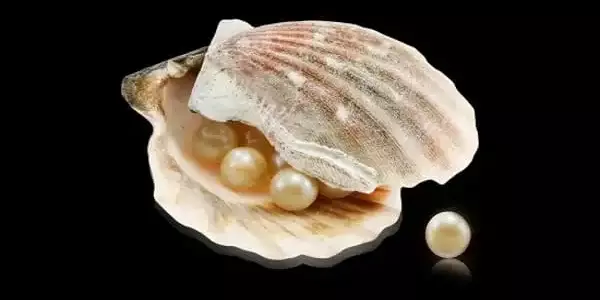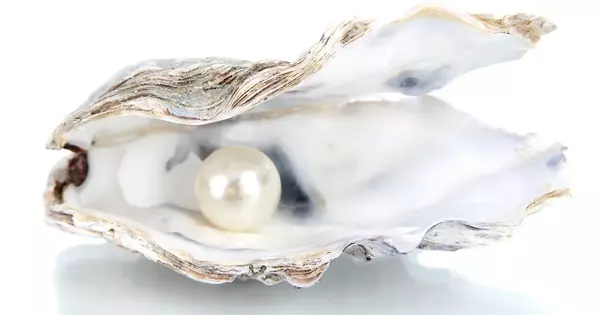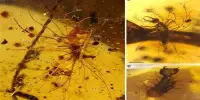Researchers have created the first robust genome of pearl oysters, which they hope will help them find strains that are resistant to increasingly common diseases or produce more beautiful pearls.
Pearl oysters are an important aquaculture animal in Japan because they produce beautiful pearls used in necklaces, earrings, and rings. This aquaculture industry was worth approximately 88 billion yen per year in the early 1990s. However, in the last 20 years, a combination of new diseases and red tides has reduced Japanese pearl production from around 70,000kg per year to just 20,000kg.
Okinawa Institute of Science and Technology (OIST) researchers have constructed a high-quality, chromosome-scale genome of pearl oysters in collaboration with a number of other research institutes, including K. MIKIMOTO & CO., LTD, Pearl Research Institute, and Japan Fisheries Research and Education Agency, which they hope can be used to find resilient strains. The study was recently published in DNA Research.
“It’s critical to establish the genome,” said Dr. Takeshi Takeuchi, a staff scientist at OIST’s Marine Genomics Unit. “Genomes contain the entire set of genes found in an organism, many of which are required for survival. With the entire gene sequence, we can conduct numerous experiments and answer questions about immunity and pearl formation.”
In 2012, Dr. Takeuchi and his collaborators published a draft genome of the Japanese pearl oyster, Pinctada fucata, which was one of the first genomes assembled of a mollusk. They continued genome sequencing in order to establish a higher quality, chromosome-scale genome assembly.
Different genes on a pair of chromosomes are a significant find because the proteins can recognize different types of infectious diseases. It is important to maintain the genome diversity in aquaculture populations.
Dr. Takeuchi
Dr. Takeuchi went on to explain that the oyster’s genome is made up of 14 pairs of chromosomes, one set inherited from each parent. The two chromosomes of each pair carry nearly identical genes, but there can be subtle differences if a diverse gene repertoire benefits their survival.
Traditionally, when a genome is sequenced, the researchers combine the two chromosomes. This works well for laboratory animals, which have nearly identical genetic information between the two chromosomes. However, in wild animals where there are a large number of gene variants between chromosome pairs, this method results in information loss.
The researchers in this study decided not to merge the chromosomes when sequencing the genomes. Instead, they sequenced both sets of chromosomes, which is a very unusual method. In fact, this is most likely the first study of marine invertebrates to use this method.
As pearl oysters have 14 pairs of chromosomes, they have 28 in total. OIST researchers Mr. Manabu Fujie and Ms. Mayumi Kawamitsu used state-of-the-art technology to sequence the genome. The other first author, Dr. Yoshihiko Suzuki, former Postdoctoral Scholar in OIST’s Algorithms for Ecological and Evolutionary Genomics and now at the University of Tokyo, and Dr. Takeuchi reconstructed all 28 chromosomes and found key differences between the two chromosomes of one pair — chromosome pair 9. Notably, many of these genes were related to immunity.

“Different genes on a pair of chromosomes is a significant find because the proteins can recognize different types of infectious diseases,” said Dr. Takeuchi.
When the animal is cultured, there is often a strain that has a higher rate of survival or produces more beautiful pearls, he said. Farmers frequently breed two animals with this strain, which results in inbreeding and a reduction in genetic diversity. The genetic diversity was significantly reduced after three consecutive inbreeding cycles, the researchers discovered. If this reduced diversity occurs in chromosome regions containing genes related to immunity, the animal’s immunity may suffer.
“It is important to maintain the genome diversity in aquaculture populations,” concluded Dr. Takeuchi.
This research was supported by grants from the Project of the Bio-oriented Technology Research Advancement Institution, a special scheme project on advanced research and development for next-generation technology.
Comment by Prof. Shugo Watabe (Visiting Professor at the Kitasato University, professor emeritus at the University of Tokyo)
Cultured pearls were developed for the first time in the world 130 years ago by Kokichi Mikimoto in Japan. Even today, they are the second most exported marine product produced in Japan, after scallops. However, the history of pearl aquaculture in Japan has been a battle against diseases in the aquaculture environment. The damage caused by the red discoloration disease, which emerged in 1996, was particularly severe.
Japan’s cultured pearl production has declined significantly. The pearl farming industry has recently faced major problems due to the spread of viruses-caused diseases. Although the exact causes of diseases and countermeasures have yet to be determined, it has been suggested that pearl cultivation in Japan may be suffering from genetic deterioration as a result of inbreeding of pearl oysters with superior traits, making it difficult to respond to various environmental changes and the emergence of pathogens.
The findings of this study shed light on the issue of pearl cultivation in Japan, and they have significant industrial implications. Moreover, many genes involved in the immune system have been identified. This also sheds light on the mystery of pearl formation, explaining why pearl oysters can form a nacreous layer in response to a foreign object introduced from outside. The unique and graceful luster of Akoya pearls produced by Japanese pearl oysters attracts people from all over the world, which is not seen in pearls produced by other pearl oyster species. The current study is expected to be the start of genetic research into this trait.















